In June, DC Comics kicked off the start of its Rebirth initiative. After a wave of criticism surrounding the way they have treated their characters’ rich histories since 2011’s New 52 relaunch, DC has decided to rebrand. They hope that by restoring their characters’ pasts, they will restore readers’ faith in them as well. Do they succeed? That’s what the Comics Beat managing editor Alex Lu and entertainment editor Kyle Pinion are here to discuss. Book by book. Panel by panel.
Note: the reviews below contain **spoilers**. If you want a quick, spoiler-free buy/pass recommendation on the comics in question, check out the bottom of the article for our final verdict.
 The Hellblazer #4
The Hellblazer #4
Writer: Simon Oliver
Artist: Moritat
Colorist: Carrie Stratchan & Tony Avina
Lettering: Sal Cipriano
Kyle Pinion: It should come to no surprise, at least not to our regular readers, that I’ve found Simon Oliver and Moritat’s relaunch of John Constantine in The Hellblazer to be one of the better efforts of the entire Rebirth line. Capturing the inherent Britishness and political overtones of the character that have been in place since the Jamie Delano days, Oliver has restored what finally feels like the real John Constantine again…or at least as much as we’re going to get in a DC Universe version. It’s a heck of a lot more of a comfortable fit than the guy that was flinging fireballs with Justice League Dark. And I think Moritat is doing some of the best panel to panel work of his tenure at DC on this very title. His approach to the mystical world of Constantine, and the grubbier side of London has produced, ironically, some the cleanest work I’ve seen out of him – though I haven’t seen his Image work to really compare.
This fourth issue, also the fourth part of “The Poison Truth” arc, presents an interesting test for both the writer and the artist. What is basically a bottle episode in a comic. The issue, barring a few segues into The Rot with Swamp Thing and Mercury, settles its focus on just John and Chas being held captive in a room by White Boy and his band of hooligans, looking to find out how John picks his horses at the race track and trying to get in on that stroke of luck. And until the timely intervention of the hero of the piece, the only real tension produced by this chapter is through the threat of White Boy conducting bodily harm to our two heroes and whether or not John is able to talk his way out of it.
Bottle episodes were, at their outset anyway, a cost saving measure for television producers. Keeping the action for an episode on one set, because of budget overruns the week prior. Nowadays it’s more just a storytelling device, especially in the case of a comic. Though it remains as challenging as ever, as it particularly behooves the writer to be able to compose compelling enough dialogue to keep reader interest from flagging in a superhero comic that is relatively low-key in terms of action, and the artist has to vary the panels and framing to a point where no sense of tedium ever sets in regardless of the small space and movement. It goes without saying that both Oliver and Moritat are more than up to the task. Oliver’s dialogue has been one of the strongest points of the run to date, unfurling John’s unique POV and leftist diatribes and here we get a particularly timely tete a tete between he and the white nationalist White Boy with John getting the upper hand at just about every opportunity, while also underscoring the strong bond that keeps John and Chas together despite all the awful situations they continually put each other then (this time it was Chas’ fault for once).
One of the continuing threads that I’ve really enjoyed from this run is how Swamp Thing is burrowing through The Rot in his search of Abby as basically a background tale. This huge epic that would probably a multi-part journey in his own book happens simply in the margins here and it’s a bit of a delight to get the cliffs notes version and speaks to how strong the economy of storytelling is. You’ve got two very-different plot threads sharing space and neither feels terribly short-changed. I also admire how effectively Moritat swaps from the ordinary of John and Chas’ perspective, into the over the top supernatural of Alec and Mercury’s. I would like to say, before handing this over, that the last couple of pages are awesome to behold in a sort of Frank Miller-type way. It reminds me of prime 80’s Daredevil, with those same sort of beat by beat in the darkness just before an unimaginable terror sweeps over the bad guy. That’s some great comic-booking. Whatchoo think, Alex?
Alex Lu: I appreciate your observation about The Hellblazer #4 being a bottle episode, Kyle. I hadn’t looked at the issue from that perspective before and now that I see it, I have a better understanding of why I think this comic is so strong.
One of my favorite things about bottle episodes are that they force creators to focus on character interactions and development rather than intricate plots or bombastic visuals. Compared to previous issues of The Hellblazer, this latest entry to the series is not particularly propulsive or grandiose. The series’ major part, which focuses on the machinations of the mysterious djinn, falls into the background of the story as Constantine’s and Chad’s confrontation with White Boy and his gang takes center stage. This narrow focus on a small group of characters conversing is a huge boon for a reader like me, may now be more familiar with Constantine but is less so with the cast of secondary characters that surround him. By the end of this issue, I felt like I had a stronger understanding of who Chad is and why he remains friends with a man who constantly takes advantage of him and gets him into dangerous situations. I even had a better understanding of what makes a man as hateful as White Boy the person he is.
That latter thread is particularly poignant Kyle, as you mentioned earlier. When we talked to Simon Oliver about The Hellblazer a few weeks back, he noted that it was difficult to write fresh political commentary into a monthly comic because of the long lead times between the script’s production and the comic’s release as well as the quickening news cycle. It’s all the more fortuitous then that Oliver’s characterization of White Boy, which functions as a way to understand disgruntled Brexit voters, also works as a window of insight into the lives of many who voted Donald Trump into the American presidency. White Boy’s dialogue is laden with buzzwords like “lefty” and “illegals” but as Constantine notes, “scrape away the queen, country, and racial purity bullcrap and nine times out of ten you’re left with a hatred of something much, much closer to home.” As it turns out, White Boy’s mother is currently married to a Pakistani bus driver. While the point is never fully expounded upon, one gets the feeling that White Boy’s racism could be a product of disdain towards his mother for remarrying projected onto a large group of people. Indeed, in stories as in life, it’s much easier to reduce people down to simplistic definitions of “good” and “evil” where in truth, most of us live our lives somewhere in the grey space between the two poles. These observations are what elevate The Hellblazer from a good book to a great one.
However, if you’re less interested in heavy thoughts and more excited by beautiful pictures, The Hellblazer has you covered there too. Our time in The Rot this week is rendered beautifully by Moritat. As Mercury and Swamp Thing traverse through the hostile domain in search of Swamp Thing’s wife and the keeper of The Rot, Abby, the land grows more and more hostile. Monsters of varying shapes, sizes, and layers of teeth spring from the ground and descend from the sky. They lash and cut and entangle themselves around the only living thing in their dominion until Swamp Thing is forced to poison himself by drawing power from The Rot’s tainted lands in order to escape their clutches. The imagination Moritat puts into rendering The Rot as well as the powerful poses he draws Swamp Thing in make these pages particularly delightful to watch and further cement Moritat’s position in the upper echelon of DC Comics artists.
All in all, The Hellblazer #4 is another great entry in a series that comes off as a little understated but is always poignant and beautiful. If you’re not on board with it already, now is the time to start.
Final Verdict: Buy
 Batman ‘66 Meets Wonder Woman ‘77 Chapter 1
Batman ‘66 Meets Wonder Woman ‘77 Chapter 1
Writers: Marc Andreyko & Jeff Parker
Penciller:: David Hahn
Inker: Karl Kesel
Colors: Mad Pencil
Letters: Wes Abbott
Kyle: It was only a matter of time, and after meeting The Green Hornet and The Man From U.N.C.L.E., we now have the television-originated crossover to end all crossovers with the Adam West-era Batman crossing paths with Lynda Carter’s Wonder Woman. Both writers who have been tasked with the individual adventures of Bruce Wayne and Diana Prince in the digital format team-up here for this crossover that is set into motion after Catwoman is hired by Talia al Ghul to steal an ancient book. Despite Batman and Robin’s attempts to stop the cat burglar, it still winds up in the hands of Talia and the League of Shadows. From there, we’re treated to a flashback tale, as Bruce and Alfred regale Dick with their previous history with the book entitled “The Lost World of the Ancients” and how it was put up for auction by his father Thomas Wayne, engendering both the interest of the League of Shadows but also an equally insidious party in that World War II era.
Luckily, another hero was around during Bruce’s childhood years.
I regret to say, I missed a good deal of Batman 66 during its run, though I constantly wanted to peek in on it with artists like Richard Case, Jonathan Case, and Mike Allred contributing chapters to the critically acclaimed offspring of the pop art bat-masterpiece. It also helps that I think Jeff Parker is one the seriously unheralded writers at DC, putting out continuously good to great work that just seems to constantly slip under people’s radar. Marc Andreyko is no slouch either, having produced one of my favorite mid 2000’s comics in Manhunter and has done some quite enjoyable work in the current Death of Hawkman mini. The idea that they’d be able to complement each other does not surprise me, and they don’t disappoint in the task.
This is a fun, breezy opening chapter that expertly melds together the tones of both classic series, while also believably pitching the idea that this version of Wonder Woman and that version of Batman actually occupied the same world. I’m not certain how the previous Batman 66 crossovers went having not read them, but I can’t imagine they could work as smoothly as this, but employing the two writers responsible for those respective series to combine their powers was a great move. As was employing the 40’s setting that the Wonder Woman series began in, which gives way to the idea that the World War II era Diana likely played some role in shaping just what kind of hero this Batman became. That’s a solidly neat pitch actually, we’ll see if it takes shape that way, and I’m probably reading way too much into what is only 10 pages of preamble, but the creative team makes the most of it and knocks out a fun little yarn that looks like it’ll make for a perfect bookend to the aims that both Parker and Andreyko employed into their solo outings.
I also get a bit of a thrill anytime we see the “66” versions of classic Batman rogues, albeit through the lens of the 40’s, and getting to see Ra’s al Ghul in all his glory in this era is quite a treat. And David Hahn does an amiable job capturing the flavor of both series, rendering both Adam West and Burt Ward in a recognizable fashion though not quite to the exciting heights of the artists that preceded him. His take on Lynda Carter isn’t too shabby either, though the Lyle Waggoner-Steve Trevor take reads a tad generic, with a chin that almost makes him look more like Bruce Campbell.
This is a fun kick-off, and a great all-ages tale that should appeal to both the parents that grew up loving these shows and their kids who they’ve probably at least tried to share it with at some point.
Alex: Like you, Kyle, I haven’t had the pleasure of checking out the Batman ‘66 or the various other titles in DC’s “retro” lineup. As a millennial (shake your fists now) who didn’t grow up with comics, my first extended exposure to Batman was through Christopher Nolan’s The Dark Knight. That rendition of the character is about as far from Batman ‘66’s take on Bruce Wayne as you can get in many ways. However, as Batman ‘66 Meets Wonder Woman ‘77 chapter one showed me, both versions have equal merit.
What grabbed me most about this title is how strongly the creative team has committed to filling the book with a sense of wonder and joy. From the first establishing shot panel, which features Catwoman yelling “Me-oww! I’m in,” as she “purrrrrloins” an ancient book from a Gotham socialite, the book establishes a playful vibe and an unwavering dedication to puns. We get to see a variety of important characters from the DC Universe interact in a much less melodramatic way than we normally do. Characters like R’as Al Ghul, his daughter Talia, and even the Nazi who shows up towards the end of the story, are rendered less menacing by David Hahn’s classic cartoon art style. Talia never threatens anyone’s life directly and in a flashback, we even get to see her as a somewhat bewildered child lost in a world she doesn’t yet fully understand her place in. It’s a refreshingly bright take that allows the book to function as pure escapism– something we could all use right now.
In addition, as you mentioned Kyle, the premise that this series has established in this first issue is a great one. We don’t actually ever get to see Wonder Woman in action throughout this chapter, but we do get to see her civilian persona interact with a young Bruce Wayne. As Bruce and a young Talia wander through Wayne Manor while the adults prepare for the Wayne’s auction, Bruce accidentally bumps into Diana. He’s surprised by her appearance and is framed staring up at her in awe. She appears, flanked by Steve Trevor and Etta Candy, incredibly imposing in her black coat and her hair sharply pulled back. However, she immediately lowers himself to his level, bending down disarmingly to speak to him. The dichotomy between inner goodness and outer strength is something that ends up informing the adult Batman as much as it does Diana here, so it will be interesting to see how that relationship develops as this crossover event goes along– especially since this issue closes with Bruce and Talia learning Diana’s secret!
I’m very excited to see how Batman ‘66 Meets Wonder Woman ‘77 develops. In this first issue, the creative team has built the base for an unique take on DC’s most prolific heroes that, even at its most tense moments, never forgets to have fun.
Final Verdict: Buy
The first chapter is now available for download via the DC Comics App, Readdcentertainment.com, iBooks, comiXology.com, Google Play, Kindle Store, Nook Store, and iVerse ComicsPlus
 Alex’s Round-Up
Alex’s Round-Up
It’s hard to believe that 2016 is really almost over. It’s been a bumpy and arduous journey, but also an incredibly exciting one. This week, Wonder Woman #11 and Detective Comics #945 continue to impress me with their respective storylines. They are two of the best books to come out of the DC Rebirth line and are also some of the most improved titles compared to their previous New 52 iterations.
Elsewhere, Batgirl #5 with Hope Larson and Rafael Albuquerque completes its first arc this week as Barbara Gordon wraps up her breathless trip across Asia in a confrontation with the mysterious “teacher.” Reactions to this title have been understandably divisive, but I personally think there’s a lot to love about this book. Albuquerque’s art has been a welcome burst of energy throughout this run, adding a slight bit of edge that was not present during Babs Tarr’s artistic run with the character while maintaining the youthful vibe that made that iteration of Batgirl so popular. Larson’s script has given Barbara some solid character development and provided her and love interest Kai with some intricate interactions.
Like Gene Luen Yang’s scripting on New Super-Man, Larson’s writing work on this title suffers from certain stylistic choices that are common in Young Adult oriented works. The most egregious among these choices is that Larson tends to over-explain her story beats. She often provides captions or speech balloons that repeat information that is already conveyed to the reader through Albuquerque’s artwork or has already been explained in a previous scene. This is common practice for comics or novels geared towards a younger audience, but it makes your average monthly comics reader feel like their hand is being held too much. For what it’s worth though, this “weakness” makes Batgirl a much better book for younger readers than most of the other DC Rebirth titles. I believe it and New Super-Man would stand a much better chance of thriving if DC marketed them as such.
Thanks for following along with Kyle and I for the last six months. It’s been a huge pleasure and honor to discuss these books with you, Kyle. Thanks to everyone in the audience for following along! I’m looking forward to the year ahead because it’s a great time to be a DC fan and more generally, a comics fan. I’m a little terrified by what’s happening in the world at large but I am ready to fight for what I believe in and am comforted by the knowledge that I have a family here to support me. Happy Thanksgiving to you and yours!
 Kyle’s Round-Up
Kyle’s Round-Up
I didn’t get to read anywhere near as much as I wanted to this week, but as for standouts worth taking a look at: Wonder Woman #11 wraps up the first arc of the Greg Rucka-Liam Sharp side of the series and does so in a way that doesn’t quite provide the solid answers we’ve been looking for, it at least outright identifies what it’s changing about the character’s current background. Again, as I’ve said many, many times, I was a big fan of the Brian Azzarello-Cliff Chiang run and how they attempted to look at Diana through a new lens. At the same time, I appreciate how Rucka isn’t just tossing out those changes without them playing some major role in shaping Diana. That previous run gets a lot of lip service this issue and some fair share of meta-criticism, particularly in how a fellow Amazon treats Steve. And the final revelation is both an intriguing development and a rather tragic one.
Really, this entire exercise had thinking about how DC is approaching their revamps of both Wonder Woman and Superman in the Rebirth era. Both attempts have been working very well, as our previous reviews have indicated, but it’s funny to see one done so bluntly (“let’s just kill him”) while the other is approached with bit more grace and honestly, is a good deal easier to explain to outsiders. Then again, if New 52 Supes hadn’t of died, we wouldn’t have gotten Superwoman in its current form, so I’ll take it.
I concur with Alex about Detective Comics #945, and I find that it’s now running neck and neck with the current Batman run for my favorite Batman comic out there right now. Tynion is running on a really clever conceit that gets highlighted this issue related to the formation of this new “Batfamily”, it’s a small thing, but I really appreciated it being concretely stated.
Lastly, The Flash #11 grabbed me right out of the gate, not only as the first real team-up of Barry and the younger Wally West, but also as a neat little adventure into the source of The Shade’s powers. Picking up right up where James Robinson left off with the latter character was a move made by Williamson to warm my heart, especially with the appearance of a character not seen in years. This run just keeps getting better and better.
And yes! Thanks for sticking with us for these 6 months! It’s been delightful getting to discuss my favorite superhero universe out in the open like this and with a great partner like Alex. So thanks Alex for hanging tough with me, and thank you readers for indulging us and all the great conversations we’ve gotten to have thus far in the comments! Here’s to a full year of great adventures! Happy Thanksgiving!
Miss any of our earlier reviews? Check out our full archive!


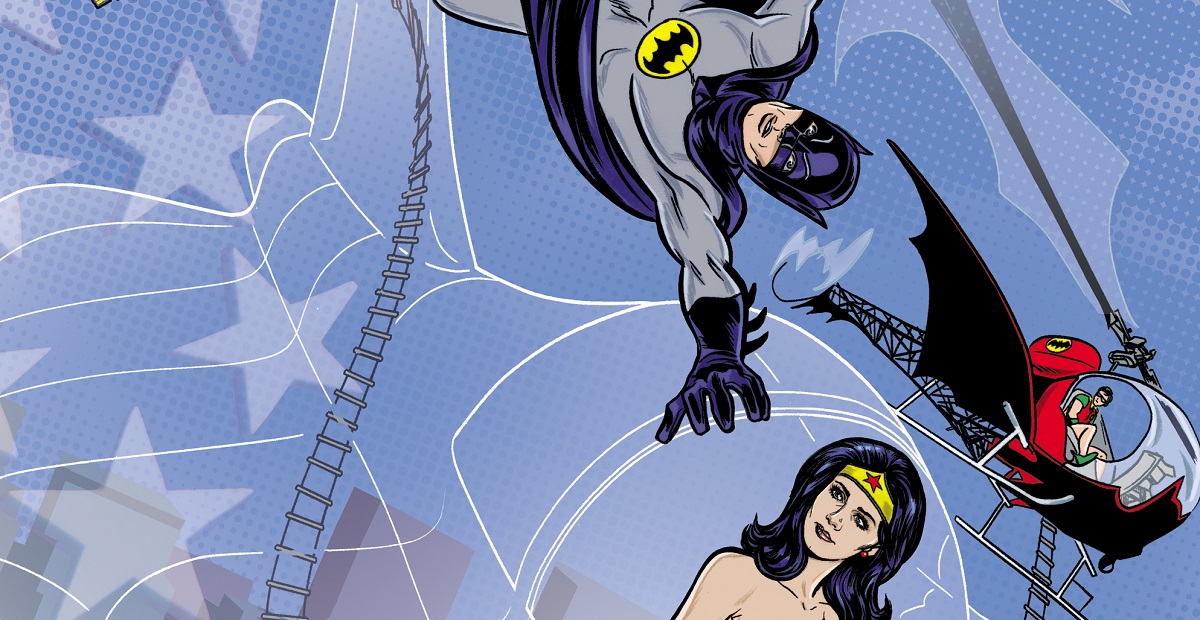
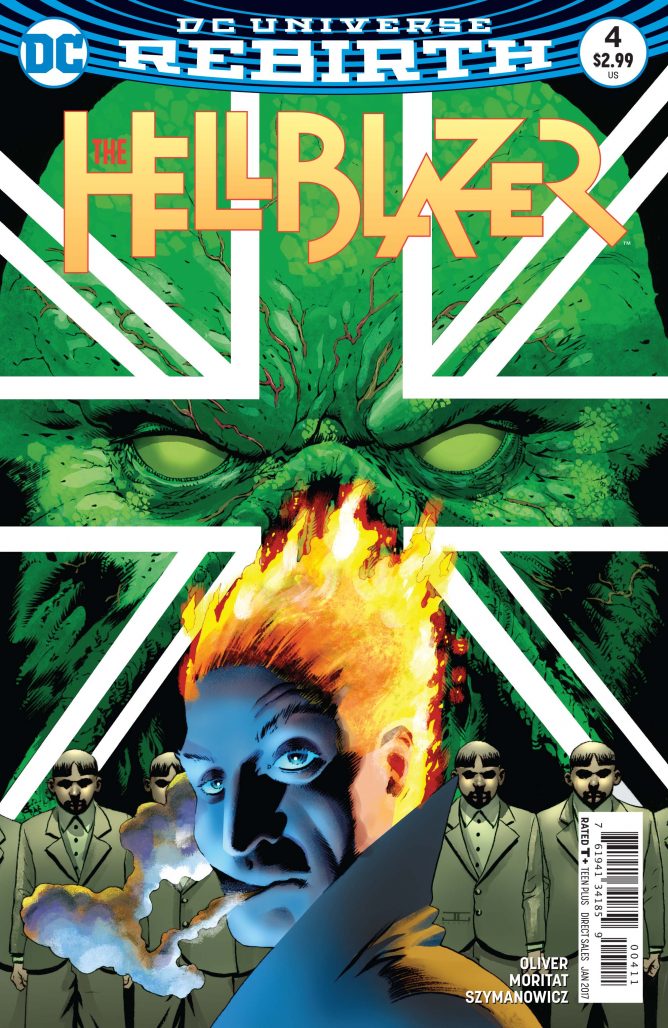
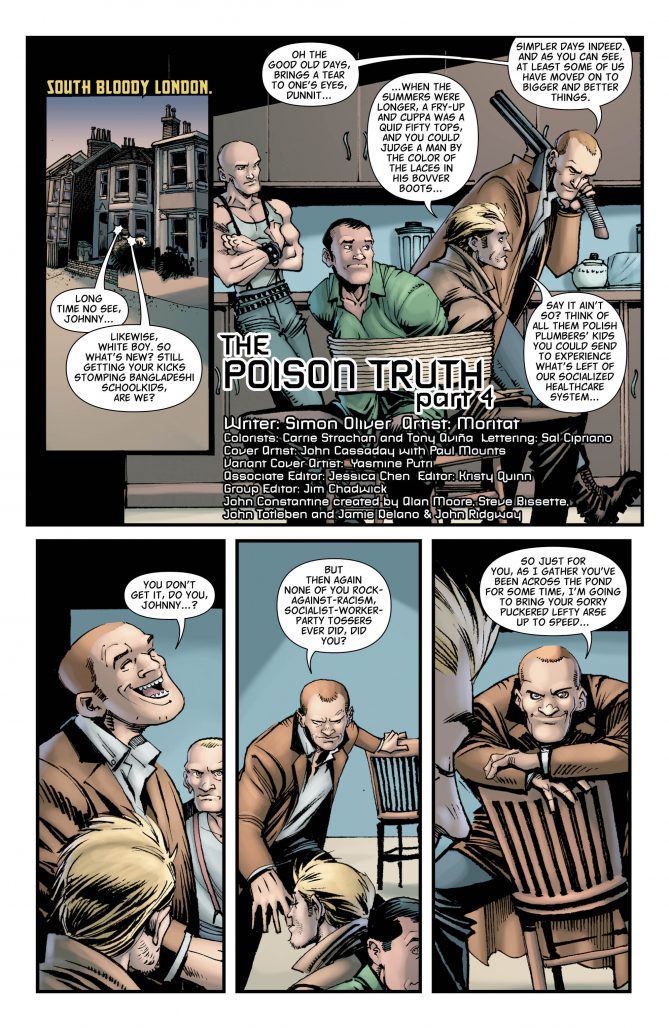
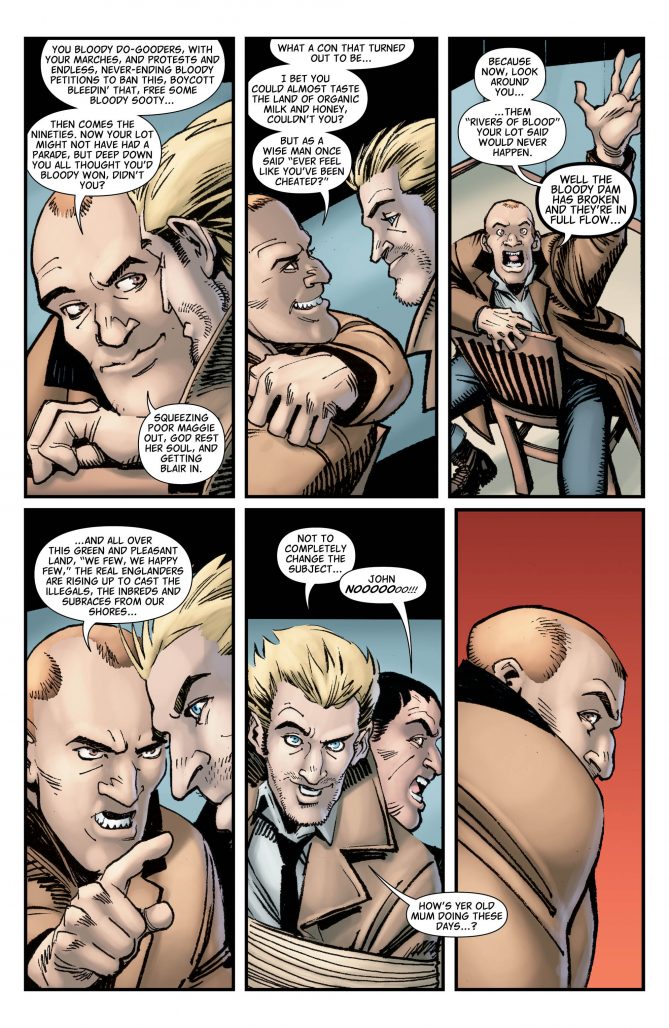
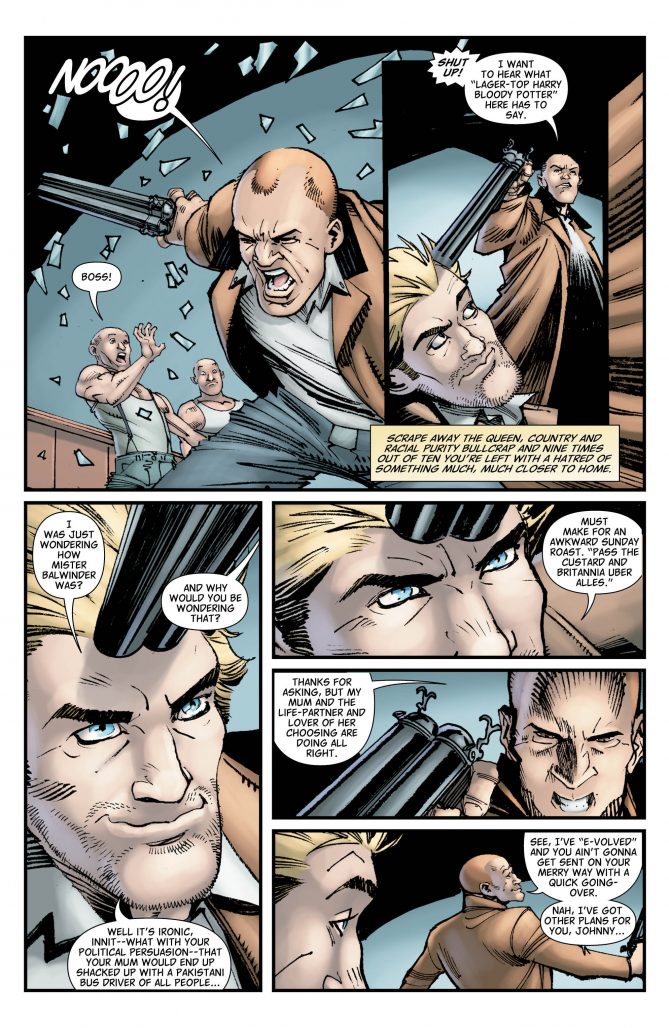
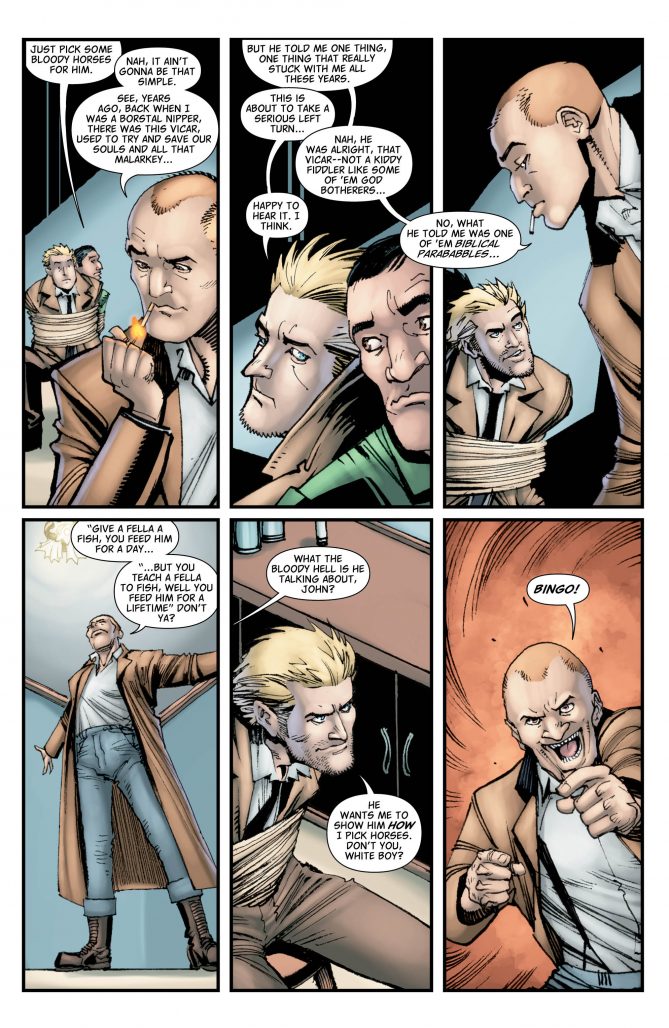
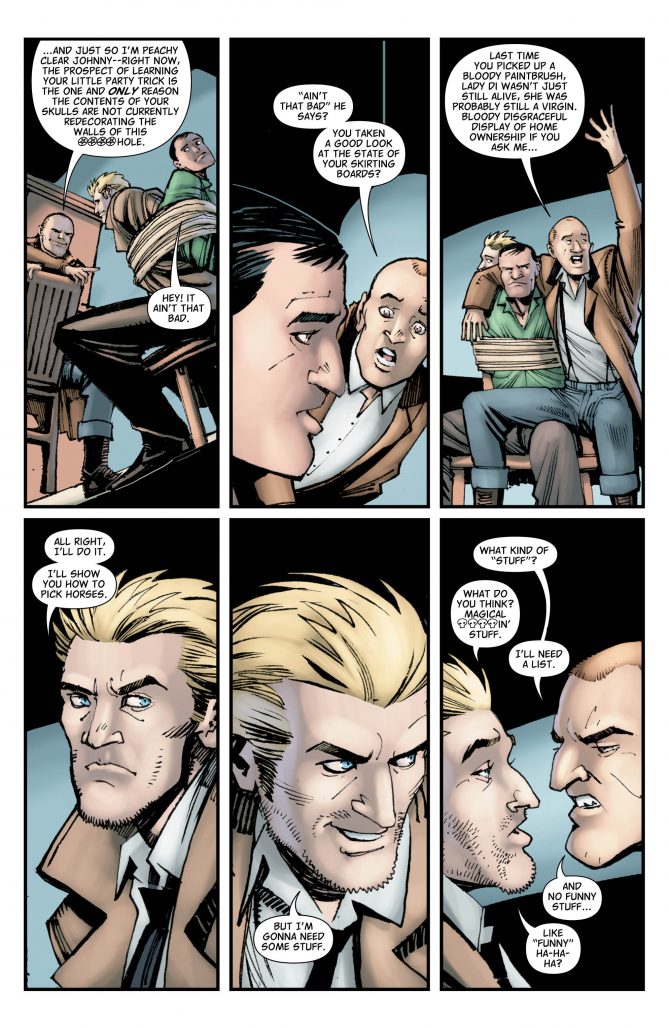
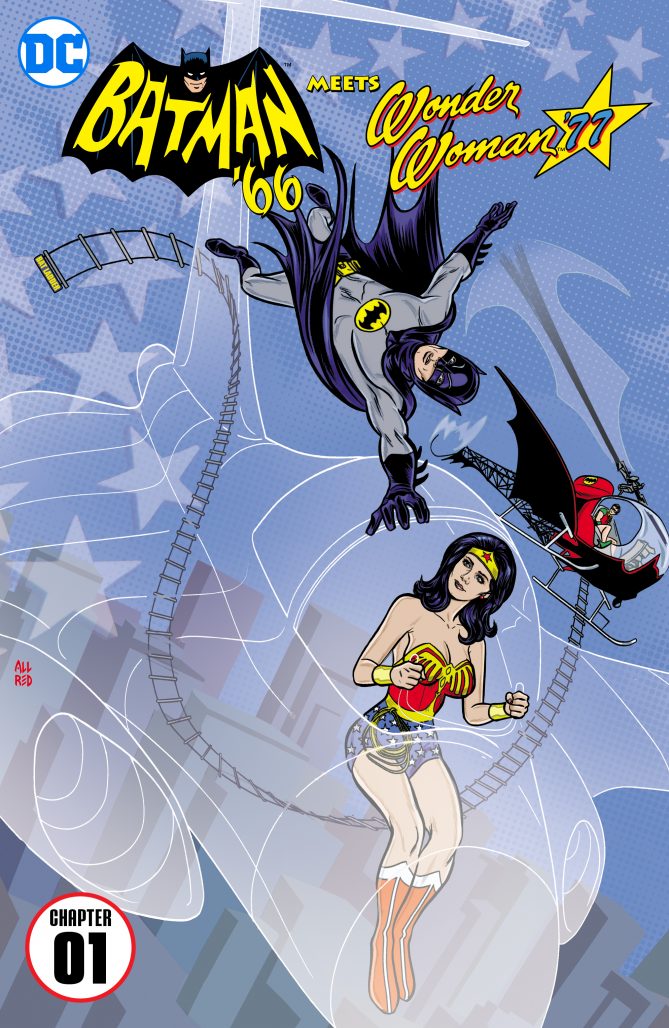
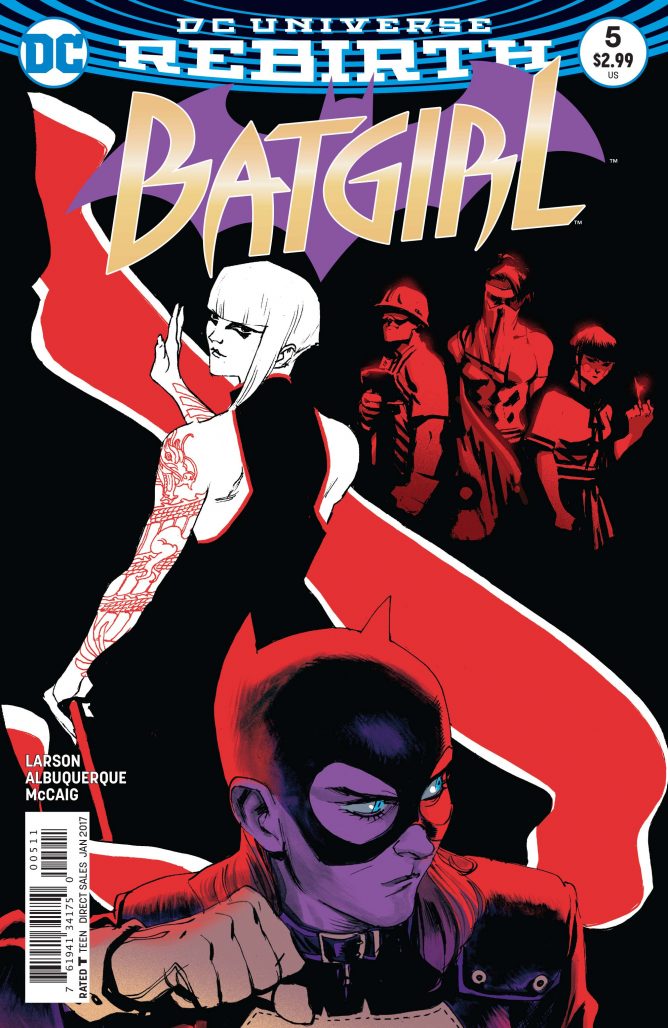
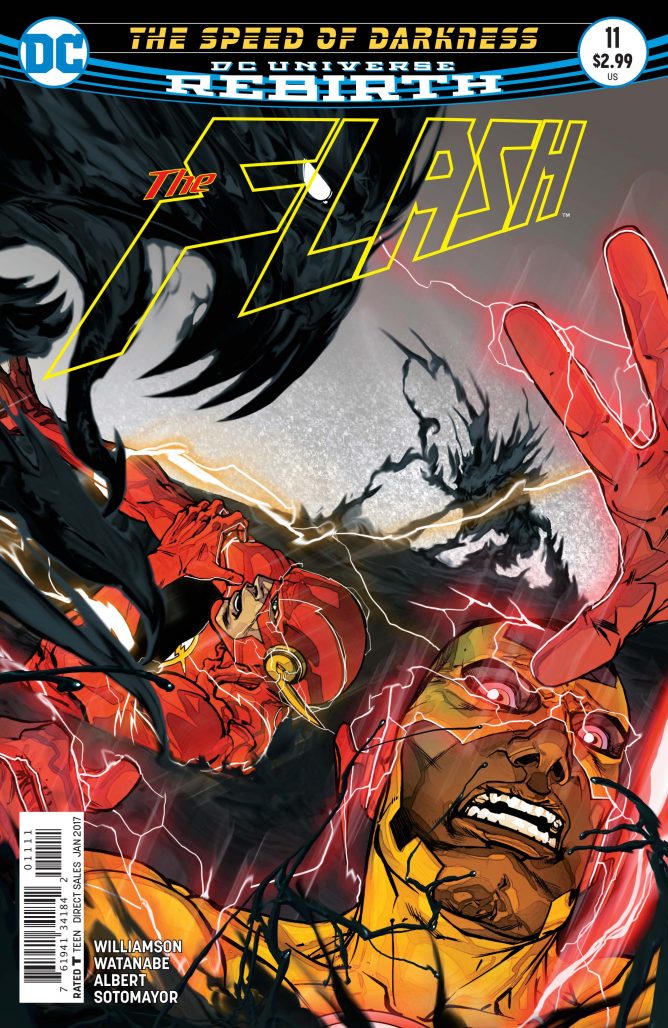





Thanks for the detailed review of Batman’66/Wonder Woman ’77. One of the things that’s difficult about drawing a book where the major characters are based on real life people is you don’t necessarily have legal permission to draw the likenesses of all involved, When you don’t have license to draw a reasonably accurate representation, a rough close-but-no-cigar facsimile is used instead. So sometimes when the characters look a little off, that’s why. Other times, the person is just plain hard to draw! :-)
I’ve been wondering how well Ra’s al Ghul would fit into this story as Ra’s was created seemingly as a reaction against the 1966 television series and the sillier aspects of the Silver Ago of Comics. I imagined that he and Talia would be played relatively straight, with the humor coming out of the situations and other characters.
So far both the adult Ra’s and adult Talia are being used as you said, Andrew. However, I think flashing back to a time where Talia and Bruce were both kids interacting with one another is an interesting twist I haven’t seen before.
Comments are closed.